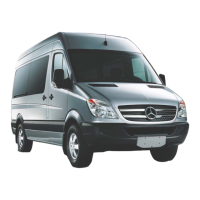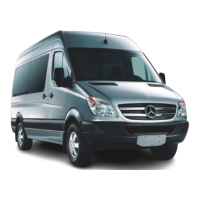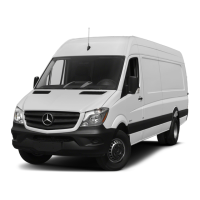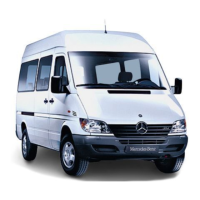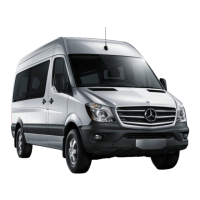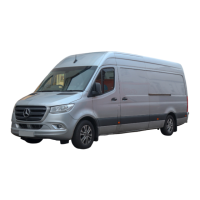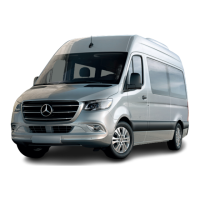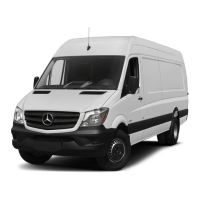Function of the restraint system in an accident
How the restraint system works is determined by
t
he severity of the impact detected and the type of
accident anticipated:
R
frontal impact
R
Rear impact
R
side impact
R
Overturning or rollover
The activation thresholds for the components of
the restraint system are determined based on the
evaluation of the sensor values measured at vari-
ous points in the vehicle. This process is pre-emp-
tive in nature. The triggering/deployment of the
components of the restraint system should take
place in good time at the start of the collision.
Factors that can be seen and measured only aer
a collision has occurred cannot play a decisive role
in air bag deployment, nor do they provide an indi-
cation of air bag deployment.
The vehicle may be deformed signicantly without
an air bag being deployed. This is the case if only
parts which are relatively easily deformed are
aected and the rate of vehicle deceleration is not
high. Conversely, an air bag may be deployed even
though the vehicle suers only minor deformation.
If very rigid vehicle parts, such as longitudinal
members, are hit, the vehicle deceleration may be
high enough for this to happen.
Depending on the detected deployment situation,
the components of the restraint system can be
activated or deployed independently of each other:
R
Emergency Tensioning Device: frontal impact,
rear impact, side impact
1)
, overturning, rollover
R
Driver's air bag, co-driver air bag: frontal
impact
R
Side impact air bag: side impact
R
Window curtain air bag: side impact, overturn-
ing, rollover, frontal impact
1)
Only when the vehicle is tted with a side impact
air bag or window curtain air bag.
&
WARNING Risk of bur
ns from hot air bag
components
The air bag parts are hot aer an air bag has
been deployed.
#
Do not touch the air bag parts.
#
Have a deployed air bag replaced at a
q
ualied specialist workshop as soon as
possible.
For your safety and that of your passengers, it is
r
ecommended that you have the vehicle towed to a
qualied specialist workshop aer an accident.
Take this into account, particularly if a Emergency
Tensioning Device is triggered or an air bag is
deployed.
If the Emergency Tensioning Devices are triggered
or an air bag is deplo
yed, you will hear a bang, and
a small amount of powder may also be released:
R
the bang will not generally aect your hearing.
R
in general, the powder released is not hazard-
ous to health but may cause short-term breath-
ing diculties to persons suering from
asthma or other pulmonary conditions.
Provided it is safe to do so, leave the vehicle
immediately or open the window in order to
prevent breathing diculties.
Air bags and pyrotechnic Emergency Tensioning
Devices contain perchlorate material, which may
require special handling or environmental protec-
tion measures. National guidelines regarding waste
disposal must be observed. In California see
https://dtsc.ca.gov/. Using the search function,
you will nd information on perchlorate, for exam-
ple.
Seat belts
Protection provided by the seat belt
Always fasten your seat belt correctly before start-
ing a jour
ney. Only a seat belt which is worn cor-
rectly can provide the intended level of protection.
&
WARNING Risk of injur
y or death due to
incorrectly fastened seat belt
If the seat belt is not worn correctly, it cannot
perform its intended protective function.
In addition, an incorrectly fastened seat belt
can also cause injuries, for example, in the
event of an accident or when braking or chang-
ing direction suddenly.
#
Always ensure that all vehicle occupants
have their seat belts fastened correctly
and are sitting properly.
Occupant safety
33
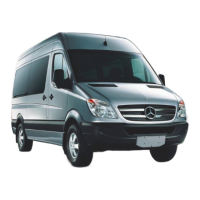
